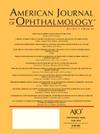斯堪的纳维亚半岛1960-2022年葡萄膜后黑色素瘤发病率增加:一项三国研究。
IF 4.1
1区 医学
Q1 OPHTHALMOLOGY
引用次数: 0
摘要
目的:研究1960年至2022年间斯堪的纳维亚半岛(瑞典、丹麦和挪威)葡萄膜后黑色素瘤发病率的时间趋势,并探讨肿瘤大小变化和患者诊断年龄之间的潜在关联。设计:回顾性、基于登记的队列研究,利用来自三个斯堪的纳维亚国家的全国性数据。参与者:瑞典(1960-2022)、丹麦(1960-2022)和挪威(1993-2022)诊断为葡萄膜后黑色素瘤(脉络膜或纤毛体)的所有患者,共计10,154例。排除虹膜黑色素瘤。方法:采用直接标准化方法计算粗发病率、年龄标准化发病率和对数转换年龄标准化发病率(1970-1974年人群)。应用线性回归评估发病率、最大基底直径(LBD)、肿瘤厚度和患者诊断年龄的趋势。一个多变量线性回归模型检验了肿瘤大小或患者年龄是否与发病率的时间依赖性增加有关。P值经bonferroni校正以进行多重比较。主要结局指标:葡萄膜后黑色素瘤的原始、年龄标准化和对数转化的年龄标准化发病率。结果:在所有三个国家中,粗、年龄标准化和对数转换年龄标准化发病率显著增加。斯堪的纳维亚的综合年龄标准化率从20世纪60年代的每百万居民每年5.2-6.8人上升到2010年代的6.1-8.7人(斜率为0.033;95% ci 0.022-0.044;结论:自1960年以来,斯堪的纳维亚地区葡萄膜后黑色素瘤的发病率有所上升。线性趋势与肿瘤大小或患者年龄的变化无关。本文章由计算机程序翻译,如有差异,请以英文原文为准。
Increasing Incidence of Posterior Uveal Melanoma in Scandinavia 1960-2022: A Tri-National Study
Purpose
To investigate temporal trends in the incidence of posterior uveal melanoma in Scandinavia (Sweden, Denmark, and Norway) between 1960 and 2022 and explore potential associations with changes in tumor size and patient age at diagnosis.
Design
Retrospective, registry‐based cohort study utilizing nationwide data from the 3 Scandinavian countries.
Participants
All patients diagnosed with posterior uveal melanoma (choroid or ciliary body) in Sweden (1960-2022), Denmark (1960-2022), and Norway (1993-2022), totaling 10,154 cases. Iris melanomas were excluded.
Methods
Crude, age-standardized, and log-transformed age-standardized incidence rates were calculated using direct standardization (1970-1974 population). Linear regression was applied to assess trends in incidence, largest basal diameter (LBD), tumor thickness, and patient age at diagnosis. A multivariate linear regression model tested whether tumor size or patient age accounted for the time-dependent increase in incidence. P values were Bonferroni-adjusted for multiple comparisons.
Main Outcome Measures
Crude, age-standardized, and log-transformed age-standardized incidence rates of posterior uveal melanoma.
Results
Crude, age-standardized, and log-transformed age-standardized incidence rates increased significantly in all 3 countries. Combined Scandinavian age-standardized rates rose from 5.2 to 6.8 per million inhabitants and year in the 1960s to 6.1-8.7 in the 2010s (slope 0.033; 95% CI: 0.022-0.044). Log-transformed rates showed a similar upward trend (slope 0.002; 95% CI: 0.002-0.003). Tumor size (diameter and thickness) decreased, while patient age at diagnosis increased over time. Multivariate analysis confirmed a time-dependent increase in incidence, independent of tumor size or patient age.
Conclusions
Posterior uveal melanoma incidence in Scandinavia has increased since 1960. The linear trend is independent of changes in tumor size or patient age.
求助全文
通过发布文献求助,成功后即可免费获取论文全文。
去求助
来源期刊
CiteScore
9.20
自引率
7.10%
发文量
406
审稿时长
36 days
期刊介绍:
The American Journal of Ophthalmology is a peer-reviewed, scientific publication that welcomes the submission of original, previously unpublished manuscripts directed to ophthalmologists and visual science specialists describing clinical investigations, clinical observations, and clinically relevant laboratory investigations. Published monthly since 1884, the full text of the American Journal of Ophthalmology and supplementary material are also presented online at www.AJO.com and on ScienceDirect.
The American Journal of Ophthalmology publishes Full-Length Articles, Perspectives, Editorials, Correspondences, Books Reports and Announcements. Brief Reports and Case Reports are no longer published. We recommend submitting Brief Reports and Case Reports to our companion publication, the American Journal of Ophthalmology Case Reports.
Manuscripts are accepted with the understanding that they have not been and will not be published elsewhere substantially in any format, and that there are no ethical problems with the content or data collection. Authors may be requested to produce the data upon which the manuscript is based and to answer expeditiously any questions about the manuscript or its authors.

 求助内容:
求助内容: 应助结果提醒方式:
应助结果提醒方式:


